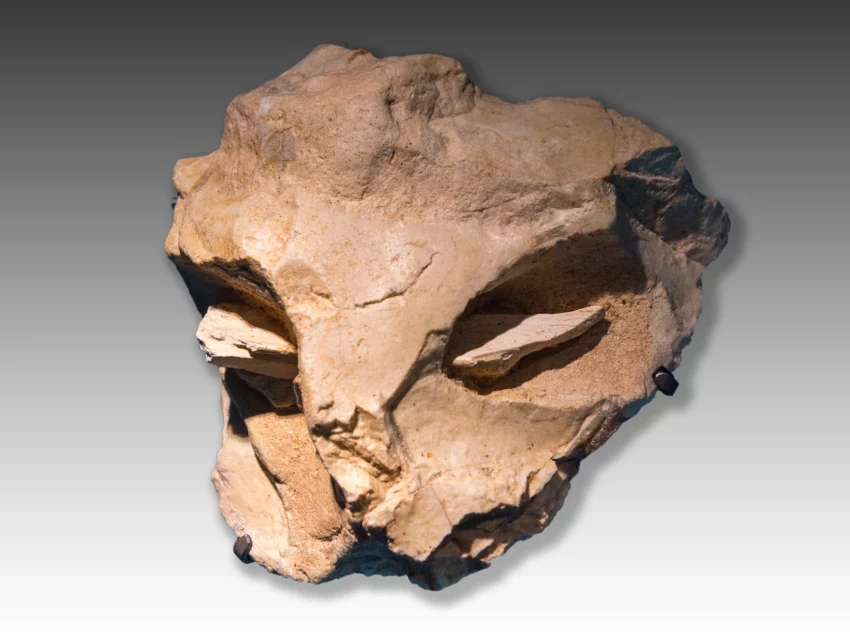The Mask of La Roche-Cotard: Unveiling Neanderthal Creativity?
The Mask of La Roche-Cotard, also known as the “Mousterian Protofigurine,” is a captivating artifact that challenges our understanding of Neanderthals. Dating back roughly 75,000 years to the Mousterian period, it raises questions about their artistic capabilities and symbolic thought. Let’s delve deeper into this enigmatic object and the ongoing debate surrounding it.
Get your dose of History via Email
A Peculiar Find: Description of the Artifact
Discovered in 1975 at the entrance of a cave in La Roche-Cotard, France, the Mask of La Roche-Cotard is a small, flat piece of flint crafted by our evolutionary cousins, the Neanderthals. What makes this artifact intriguing is its shape – it appears to resemble the upper portion of a human face. A bone fragment inserted through a hole in the stone further fuels speculation that it represents eyes. This design, as archaeologist Paul Bahn points out, challenges the long-held assumption of Neanderthals as lacking creativity.
Beyond the Surface: Debate Over Interpretation
While the facial resemblance of the Mask of La Roche-Cotard is intriguing, interpretations differ. Some archaeologists believe it serves as a testament to Neanderthal artistic expression, a form of early symbolic representation. Others remain unconvinced. They argue that the resemblance to a face could be coincidental, or that the artifact may have had a practical purpose unrelated to symbolism.
New Evidence from the Cave: Supporting the Debate
The debate surrounding the Mask of La Roche-Cotard gained new weight with a recent discovery in 2023. Researchers unearthed the oldest known Neanderthal engravings within the very same cave – La Roche-Cotard. These engravings date back over 57,000 years, adding significant evidence of Neanderthal artistic expression at the site. This discovery strengthens the argument that the Mask of La Roche-Cotard might indeed be a form of early art.
A Window into the Past: Conclusion
The Mask of La Roche-Cotard, along with the recent discovery of engravings, presents a fascinating glimpse into Neanderthal culture. It prompts us to re-evaluate their cognitive abilities and challenges the notion of limited artistic expression. The ongoing discoveries at La Roche-Cotard promise to shed even more light on these enigmatic ancestors, helping us piece together the puzzle of prehistoric human life.
Sources:


